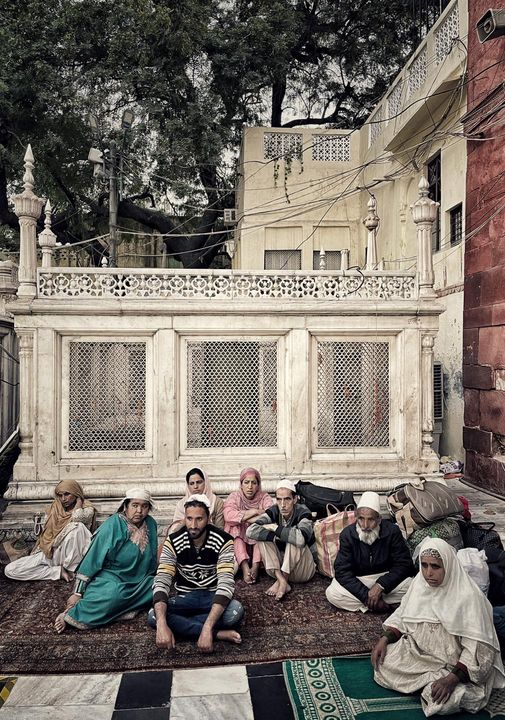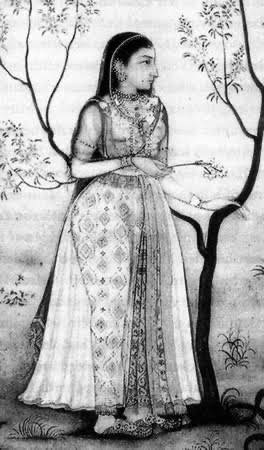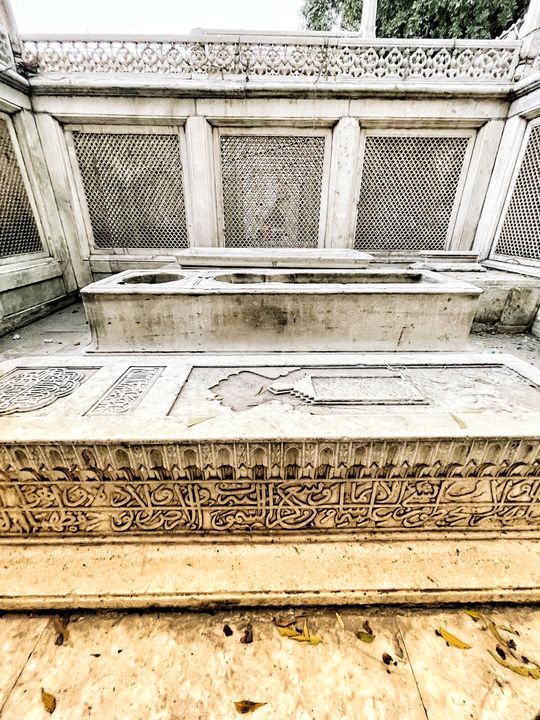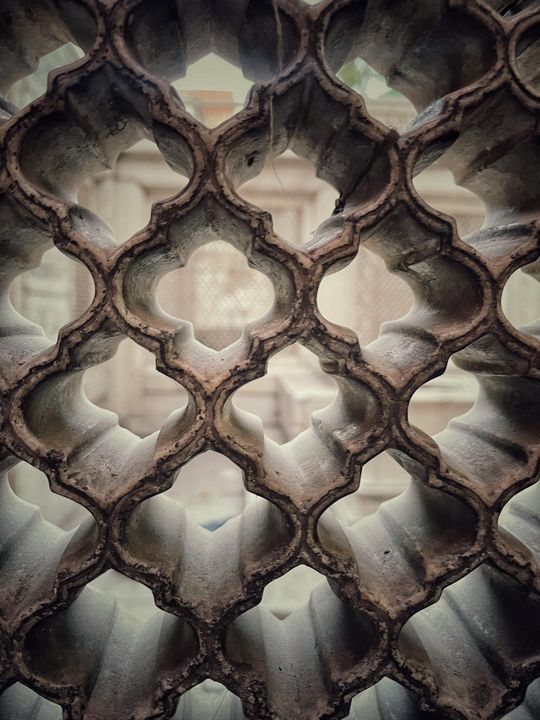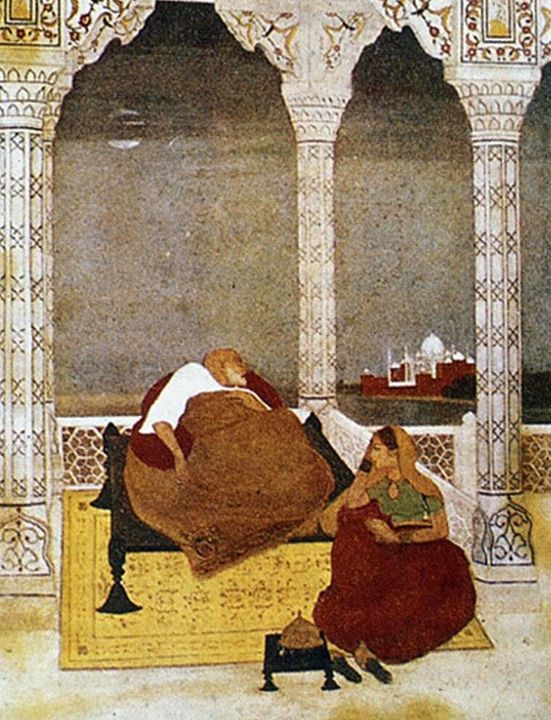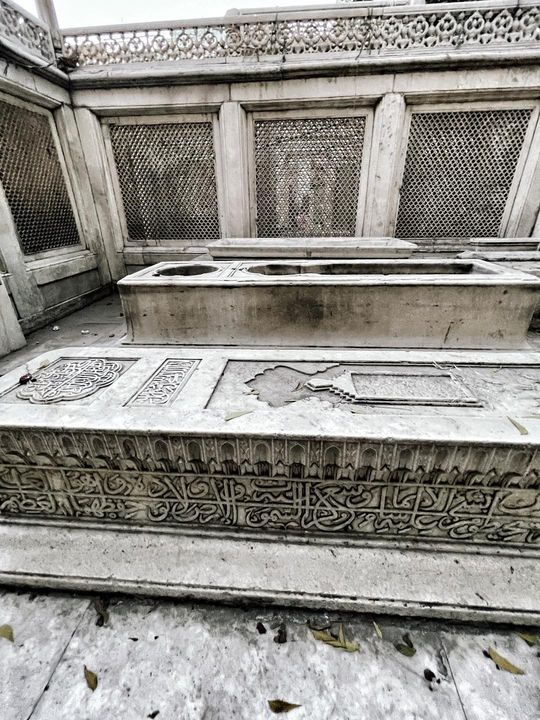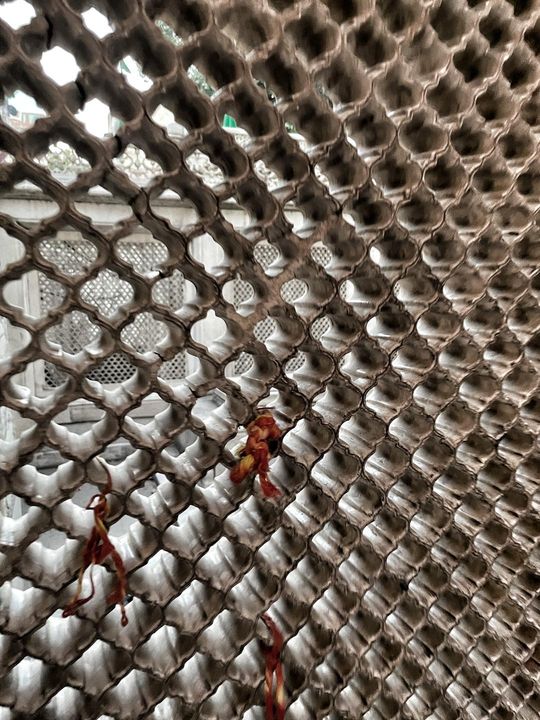Jahanara Begum: The Mughal princess who designed Chandni Chowk, New Delhi.
Jahanara Begum: The Mughal princess who designed Chandni Chowk, New Delhi.
one of the most influential women of the Mughal Empire now rests at the Nizamuddin Auliya’s dargah in New Delhi, in a simple, open white marble structure, unknown to the thousands of devotees that visit the dargah complex every day. Unlike her parents and Mughal ancestors, there is no giant mausoleum built for her.
She is buried in a simple marble enclosure in the Dargah of Hazrat Nizamuddin Auliya. It was built by her in her lifetime in 1681. She died and was buried in the same year. It is ornamented with embossed traceries and according to Stephen Carr writing in 1876, “is hollow at the top and exposed to the sky – the hollow is filled with earth covered with green grass,” as per her will, though today it is covered with rose petals and flowers.The grave is an enclosure of four walls, about 16′ by 12′ and over 8′ high. Each of the walls consists of three panels, covered with marble screens of lattice work. The wall with the door has 2 panels with the door taking place of the third screen. The top of the walls had a perforated marble balustrade , but only a small pice exists today. Of the four small marble minarets on the four corners of the enclosure, too only 2 exist.
Born in 1614, Jahanara lived a life outside the conventional role of a Mughal princess —as an exemplary poet, writer, architect, engineer and painter, especially in an era where the lives of Mughal women were largely confined within the walls of the zenana.
The narrow lanes of the famous Chandni Chowk, one of the oldest and busiest markets of Old Delhi (earlier known as Shahjahanabad), receive thousands of shoppers and tourists every day. Just eight kilometres away, at Hazrat Nizamuddin Dargah, rests its architect, unknown and hardly visited by anybody, in a tiny open grave — Jahanara Begum, the eldest daughter of Mughal emperor Shah Jahan and his beloved wife Mumtaz Mahal.
Born in 1614, Jahanara lived a life outside the conventional role of a Mughal princess — as an exemplary architect, engineer, poet, writer and painter, especially in an era where the lives of Mughal women were largely confined within the walls of the zenana. A close aide of her father.
Jahanara was the First lady of the Empire who was given the titles of Sahibat al-Zamani (Lady of the Age) and Padishah Begum (Lady Emperor), or Begum Sahib (Princess of Princesses)when she was just 17 years old after the untimely demise of her mother in 1631.
Her power was such that, unlike the other royal princesses, she was allowed to live in her own palace, outside the confines of the Agra Fort.
“She was loved by all and lived in state and magnificence,” writes Niccolao Manucci, an Italian traveller and writer in his book Storio do mogor, which is considered to be the most detailed account of the Mughal court during the reign of Shah Jahan and later of Aurangzeb.
Jahanara was also one of the few Mughal women who owned a ship. Her ship, the Sahibi, was docked at her port in Surat and carried trade with the Dutch and the English. “This princess (Jahanara) had an annual income of three million rupees, in addition to the revenues of the port of Surat, assigned for her expenditure on betel. She had, in addition, many precious stones and jewels that had been given to her by her father,” adds Manucci.
Francois Bernier, a French traveller, remarks on the father-daughter duo, saying, “Shahjahan reposed unbounded confidence in his favourite child; she watched over his safety, and was so cautiously observant, that no dish was permitted to appear upon the royal table which had not been prepared under her superintendence.”
Inclination towards Sufism
Along with her brother Dara Shikoh, Jahanara was a great benefactor of Sufism, a disciple of Mullah Shah Badakhshi, who introduced her to the Qadriyah Sufi order to satiate her spiritual longings.
With Aurangzeb sitting on the imperial throne, Shah Jahan was put under house arrest within the walls of Agra Fort. Dara Shikoh, on the run, was subsequently captured and brought to Shahjahanabad where he was executed al;ong with Shuja and Baksh. Princess Jahanara voluntary
accompanied her father and took care of him for eight years till he died in 1666.
Despite her distressed relations with his brother, Jahanara, after Shah Jahan’s demise, returned to the courtly life under Aurangzeb, who she, at many occasions, referred to as a white serpent, an epithet, she claims was given by her father. “Aurangzeb gifts Jahanara 100,000 gold pieces and an annual pension of 17 lakh rupees, and restores her title of Padshah Begum,” wrote Ira Mukhoty in her book Daughters of the Sun as Jahanara returns to the court.
Architectural footprints
Following in her father’s footsteps, the princess contributed several architectural gems that included mosques, shelters, inns, bazaars and gardens to the cityscapes of Mughal India. Amongst the most popular of them were the caravanserai built within the walls of the capital city of Shahjahanabad that formed the bazaar area subsequently known as Chandni Chowk.
“The chowk was an octagon with sides of one hundred yards and a large pool in its center. To the north, Jahanara built a Caravansarai (roadside inn) and a garden and, to the south, a bath. On certain nights the moonlight reflected pale and silvery from the central pool and gave to the area the name Chandni Chawk (Silver or Moonlight Square). This name slowly displaced all others until the entire bazaar, from the Lahori Gate to the Fatehpuri Masjid, became known as Chandni Chawk,” writes Stephen Blake in his book Shahjahanabad: The sovereign city in Mughal India.
Beside the Chowk, Jahanara is credited with paying for the construction of the famous Jami Masjid in Agra. She also commissioned a huge mosque and religious complex devoted to Mulla Shah Badakhshi in Srinagar and added the white marble pillared porch near the entrance of Ajmer Sharif Dargah, today known as Begami Dalan, in 1643.
Last years
The final years of the princess were spent outside the walls of the court in her mansion. She was handed over the responsibility to look after her niece, Jaani Begum—Dara Shikoh’s daughter, who she later married off to Aurangzeb’s oldest son, Mirza Muhammed Azam. She herself like many Mughal princesses remained unmarried.
“Jahanara establishes herself in the city as the most influential woman patron of literature and poetry. She collects rare and beautiful book and her library is peerless. She donates money to charity, especially Sufi dargahs, and carries on a genteel diplomacy with minor rajas who come to her with grievances and gifts,” wrote Mukhoty.
The inscription on the tomb, written by Jahanara herself, reads as follows:
Allah is the Living, the Sustaining
Let no one cover my grave except with greenery,
For this very grass suffices as a tomb cover for the poor.
The mortal simplistic Princess Jahanara,
Disciple of Khwaja Moin-ud-Din Chisti,
Daughter of Shah Jahan the conqueror
Tomb of Jahan-ara Begum
Google Location
Google Location
What's Your Reaction?








